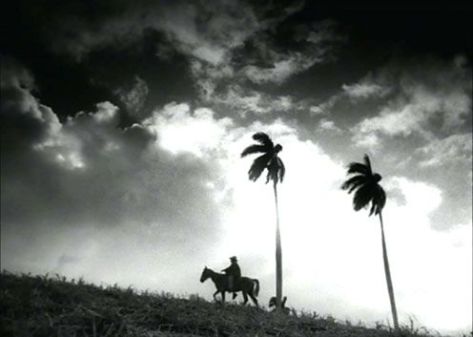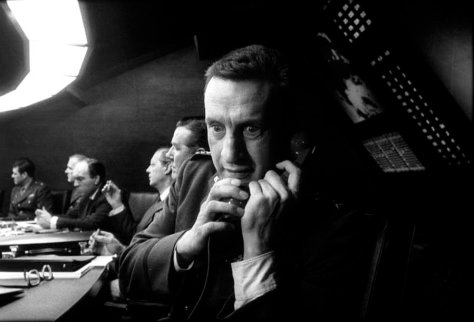By Dennis Hartley
(Originally posted on Digby’s Hullabaloo on December 30, 2017)

“Sir, I am unaware of any such activity or operation, nor would I be disposed to discuss such an operation if it did in fact exist, sir.” – Captain Willard, from Apocalypse Now
“Boy…what is it with you people? You think not getting caught in a lie is the same thing as telling the truth?” – Joe Turner, from Three Days of the Condor
“Conscience doth make cowards of us all.” – From Hamlet, by William Shakespeare
When you peruse the history of the CIA (wait a sec…did I just hear a “click” on my phone?), at times it is indistinguishable from a campy 60s TV parody of the agency. Was there really a CIA psychotropic drugs research program called “MK-Ultra” (aka “Project Artichoke” and “Project Bluebird”) or am I conflating it with an episode of “Get Smart”?
Unfortunately, the MK-Ultra program would prove all too real for bacteriologist and former military officer Frank Olson. Olson had served as a captain in the Army’s Chemical Corps in the 1940s, which helped him snag a post-service civilian contract job with the Army’s Biological Warfare Laboratories (based out of Fort Detrick, Maryland).
Eventually Olson was recruited by the CIA to work with the agency’s Technical Services Staff, which led to his acquaintance with some of the architects of the aforementioned MK-Ultra research program. While on a retreat with a group of CIA colleagues in November of 1953, Olson was offered a drink that was spiked with an early form of LSD (unbeknownst to him). Just 10 days later, on the night of November 28th, 1953, Olson fell to his death from the 13th floor of a Manhattan hotel.
The NYPD called it suicide. And that was that. At least…that was the story at the time.
There is a lot more to this tale; specifically regarding what ensued during those critical 10 days between Olson’s LSD dosing at the retreat, and the evening that he died at the hotel.
Uncovering the details behind Olson’s demise has become an obsessive 60+ year quest for his son, Eric Olson. Eric’s relentless pursuit of the truth, a long slow white Bronco chase through the dark labyrinth of America’s clandestine community, makes for a hell of an interesting story in and of itself. This was not lost on documentary filmmaker Errol Morris, who delves deep into the mystery with his new Netflix docudrama, Wormwood.
Wormwood is essentially a 4-hour film divided into 6 episodes; with this sprawling running time, Morris has given himself lots of room to “delve”. Now, I feel that it’s my duty to advise you up front that “delving” into a mystery is not necessarily synonymous with “solving” it. So if you go in expecting pat answers, wrapped with a bow, I’m saving you 4 hours of your life now (and you’re welcome). However, if you believe the adage that it is not about the destination, but rather about the journey, feel free to press onward.
Morris has made many compelling documentaries, from his crtically acclaimed 1978 debut Gates of Heaven, to other well-received films like The Thin Blue Line (1988), A Brief History of Time (1991), and The Fog of War (2003).
Interestingly, in this outing Morris eschews his trademark “Inteterrotron”, which gives a sense that the interviewee is “confiding” directly to the viewer. Instead, Morris plunks himself across a table from his subjects and grills them, like they’ve stumbled into Sam Spade’s office. However, he does reprise his “reality thriller” formula (mixing interviews with speculative reenactments) which he essentially invented with The Thin Blue Line; although it has been so-often imitated that it now seems cliché.
While Morris’ penchant for this Rashomon-style construction in past projects has drawn criticism, it’s a perfect foil for Wormwood; because if there is one central takeaway from the series, it is this: when it comes to plausible deniability, the CIA has 50 shades of nay.
The “official” story as to what happened in that hotel room in September 1953 has been, shall we say, “fluid” over the years (all versions are recounted). Adding to the frustration for Olson’s surviving family members (as Eric Olson points out in the film), under current laws, any citizen may file a lawsuit against the U.S. government for negligence, but never for intent. Oops! Please pardon our negligence, just never mind our culpability.
The question of “culpability” feeds the conspiracy theory elements of the film; which Morris relays via the dramatic reenactments. These segments feature a melancholic Peter Sarsgaard, whose almost spectral characterization of Frank Olson haunts the proceedings like the ghost of Hamlet’s father.
This is no accident, as Morris and Eric Olson himself make frequent analogies to Shakespeare’s classic tragedy about a son who investigates the truth behind his father’s suspicious death (hence the title of the film, taken from an aside by Hamlet, who mutters “Wormwood, wormwood” in reaction to the Player Queen’s line in the play-within-the play “None wed the second but who killed the first.”).
The Bard would be hard pressed to cook up a tale as dark, debased and duplicitous. Morris sustains a sense of dread recalling Three Days of the Condor, The Parallax View, and The Conversation. Of course, those were fiction; Olson’s story is not. Shakespeare wrote: “There are more things in heaven and earth, Horatio, than are dreamt of in your philosophy.” Wormwood not only confirms this, but reminds us why we need folks like Eric Olson and Morris around to cast light into dark corners where the truth lies obscured.






 “Oh…and uh, shug? Don’t forget to say your prayers!”
“Oh…and uh, shug? Don’t forget to say your prayers!”














